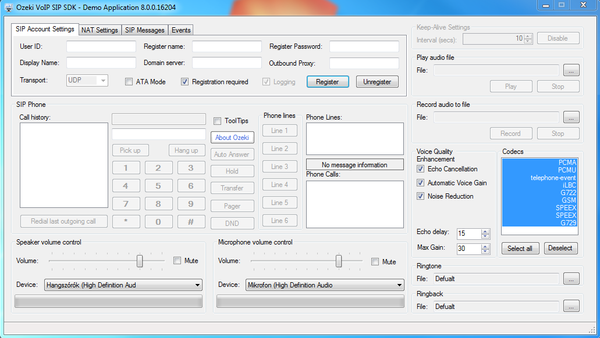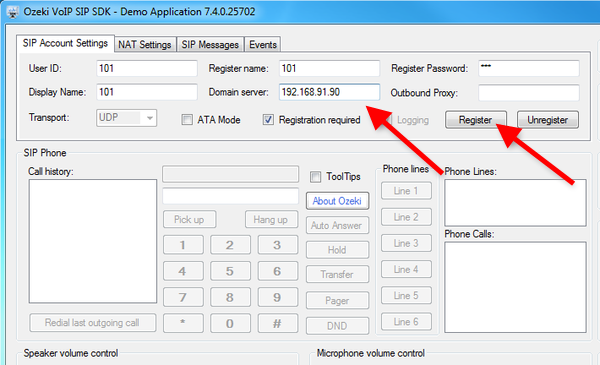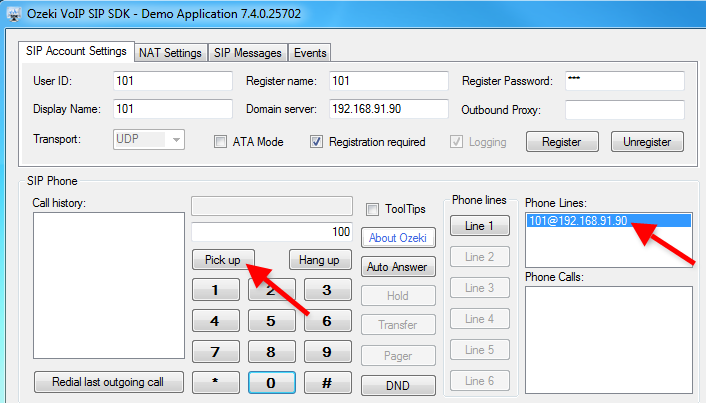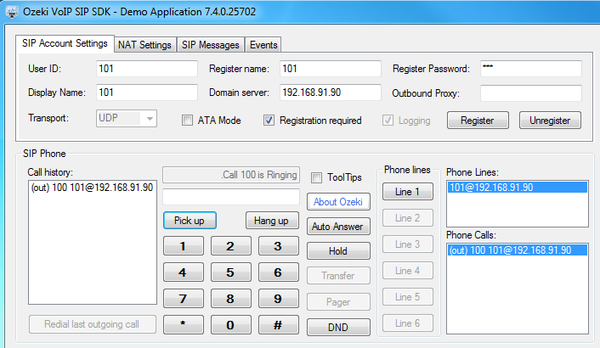Ozeki VoIP SIP SDK 是可以遵循 SIP規則使用 VoIP撥打電話的軟體,並接受再.Net環境中的開發。
當您使用了 Ozeki VoIP SIP SDK,應用程式將提供不論低或高帶寬的用戶清晰的聲音和SIP兼容的設備(硬件和軟件)。卓越的語音質量也因數字語音處理功能和擴展編解碼器而獲得保證。
Ozeki VoIP SIP SDK 的最新內置的功能還提供了視頻的支持。這意味著您可以創建SIP協議的VoIP解決方案,能夠打視頻電話了。
Ozeki VoIP SIP SDK 是基於IETF標準(SIP,RTP,STUN,TURN,ICE等),所以它與其他基於標準的產品(如,例如Asterisk,3CX,思科等的PBX等)兼容。
下載Ozeki VoIP SIP SDK後,您可以在幾分鐘內創建一個C#軟件電話或VB.net軟電話或者您可以輕鬆而快速地構建SIP的VoIP呼叫服務。這是很容易把小關的VoIP SIP SDK的應用程式中。你只需要從一些簡單的配置步驟開始。
The advantages of VoIP technology are the follows
- VoIP systems are able to detect and process touch tones and DTMF responses
- They can be automated easily
- They are able to detect when the phone has been picked up and messages are played only after this detection
- They allow to use more than one codec
- More than one file format can be used with these systems
- They are much more flexible than hardware based solutions
VoIP in the LAN
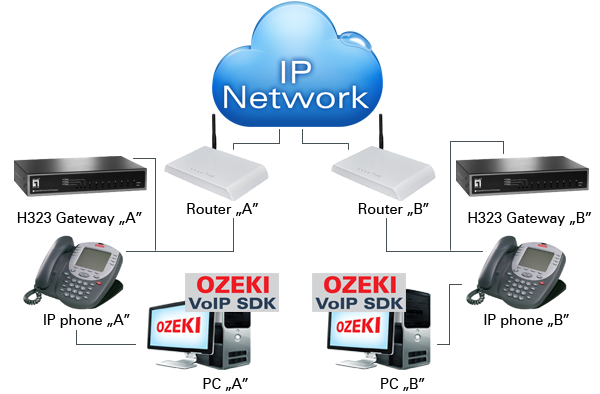
A Local Area Network (LAN) supplies networking capability to a group of computers in close proximity to each other such as in an office building, a school, or a home. LAN is your company's inside network connection. From this article you can get to know VoIP technology's greatest advantages in LAN environment.
VoIP WAN
 A Wide Area Network (WAN) is a geographically dispersed telecommunications network. The term distinguishes a broader telecommunication structure from a local area network (LAN). A wide area network may be privately owned or rented, but the term usually connotes the inclusion of public (shared user) networks.
A Wide Area Network (WAN) is a geographically dispersed telecommunications network. The term distinguishes a broader telecommunication structure from a local area network (LAN). A wide area network may be privately owned or rented, but the term usually connotes the inclusion of public (shared user) networks.
VoIP-PSTN connection
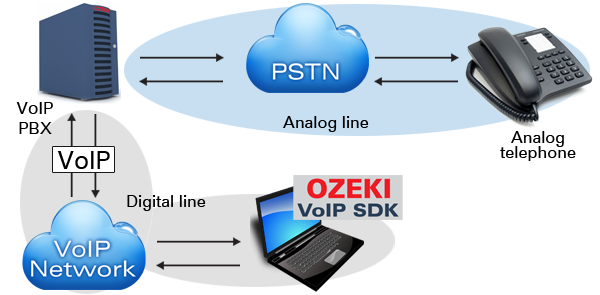 In VoIP, every phone number has an IP address to which it maps. Each time a device (PC, IP phone, ATA etc.) engages in a VoIP call, its IP address is translated into the phone number, which is then handed over to the PSTN network. This is analogous to the way web addresses (domain names) and email addresses are mapped to IP addresses.
In VoIP, every phone number has an IP address to which it maps. Each time a device (PC, IP phone, ATA etc.) engages in a VoIP call, its IP address is translated into the phone number, which is then handed over to the PSTN network. This is analogous to the way web addresses (domain names) and email addresses are mapped to IP addresses.
VoIP in mobile networks
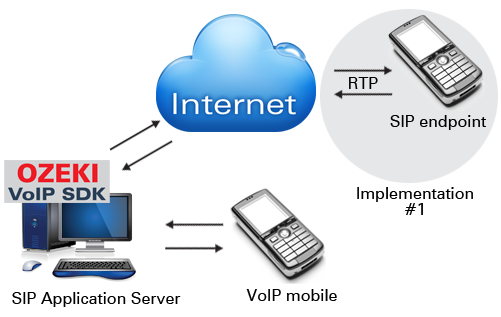 One implementation turns the mobile device into a standard SIP client, which then uses a data network to send and receive SIP messaging, and to send and receive RTP for the voice path. This methodology of turning a mobile handset into a standard SIP client requires that the mobile handset support, at minimum, high speed IP communications.
One implementation turns the mobile device into a standard SIP client, which then uses a data network to send and receive SIP messaging, and to send and receive RTP for the voice path. This methodology of turning a mobile handset into a standard SIP client requires that the mobile handset support, at minimum, high speed IP communications.
Another implementation of mobile integration uses a softswitch like gateway to bridge SIP and RTP into the mobile network's SS7 infrastructure. In this implementation, the mobile handset continues to operate as it always has (as a GSM or CDMA based device), but now it can be controlled by a SIP application server which can now provide advanced SIP based services to it.
VoIP on the Internet
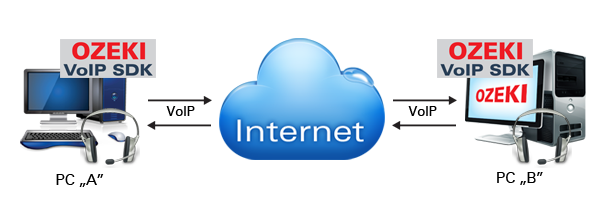
VoIP technology is related to Internet technology, as VoIP uses Internet Protocol for establishing communication between two (or more) parties. It is also a very versatile technology, being able to make calls between PCs, landline and mobile phones - in any set-up of the three.
Peer to peer VoIP connections

A peer-to-peer VoIP call occurs when two VoIP phones communicate directly over IP without IP PBXs between them. A peer-to-peer call can be initiated directly, by calling a phone’s SIP URI, or indirectly by dialing a phone number. A peer-to-peer call will only be established when a phone number is dialed if both phones share an IP PBX. For an audio call, there is no difference (in end user experience) between a peer-to-peer call and one that uses an IP PBX.
Hardware requirements:
1 GHz or faster processor
1 GB RAM (32-bit) || 2GB RAM (64-bit)
1 GB free disk space
Operating System:
Microsoft Windows Server 2022
Microsoft Windows Server 2019
Microsoft Windows Server 2016
Microsoft Windows 2008/2008 R2
Microsoft Windows Vista
Microsoft Windows 7
Microsoft Windows 8
Microsoft Windows 10
Microsoft Windows 11
Microsoft Windows 2012/2012 R2
Developer environment:
Microsoft Visual Studio 2010/2012/2013/2019/2022
Microsoft .Net Framework 3.5 or 4.0
Microsoft Silverlight 4 (for webphone development)
Adobe Flash Builder 4.5 (for webphone development)
Adobe Flex SDK 4.5.1 (for webphone development)
